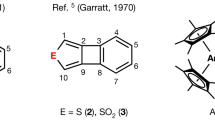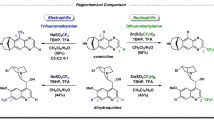Abstract
IN a letter in NATURE1, Cox, Shorter and Wardlaw examined the stereochemistry of bivalent tin and lead and arrived at conclusions which are not in agreement with some of our results.
This is a preview of subscription content, access via your institution
Access options
Subscribe to this journal
Receive 51 print issues and online access
$199.00 per year
only $3.90 per issue
Buy this article
- Purchase on Springer Link
- Instant access to full article PDF
Prices may be subject to local taxes which are calculated during checkout
Similar content being viewed by others
References
Cox, E. G., Shorter, A. J., and Wardlaw, W., NATURE, 139, 71 (1937).
Rammelsberg, C. F., Kryst. Chemie, 208 (1855).
de Marignac, Ch., Ann. des Mines, (5), 12–16 (1857).
Streng, A., Neues Jahrbuch für Miner., 2, 142 (1882).
Richardson, Amer. Chem. J., 14, 89 (1892).
Groth, P., "Chemische Krystallographie", 1, 356.
MacGillavry, C. H., de Wilde, J. H., and Bijvoet, J. U., Z. Krist., A, 100, 212 (1938).
Author information
Authors and Affiliations
Rights and permissions
About this article
Cite this article
BRASSEUR, H., DE RASSENFOSSE, A. Structure of the SnCl4- Group. Nature 143, 332–333 (1939). https://doi.org/10.1038/143332b0
Issue Date:
DOI: https://doi.org/10.1038/143332b0
Comments
By submitting a comment you agree to abide by our Terms and Community Guidelines. If you find something abusive or that does not comply with our terms or guidelines please flag it as inappropriate.



